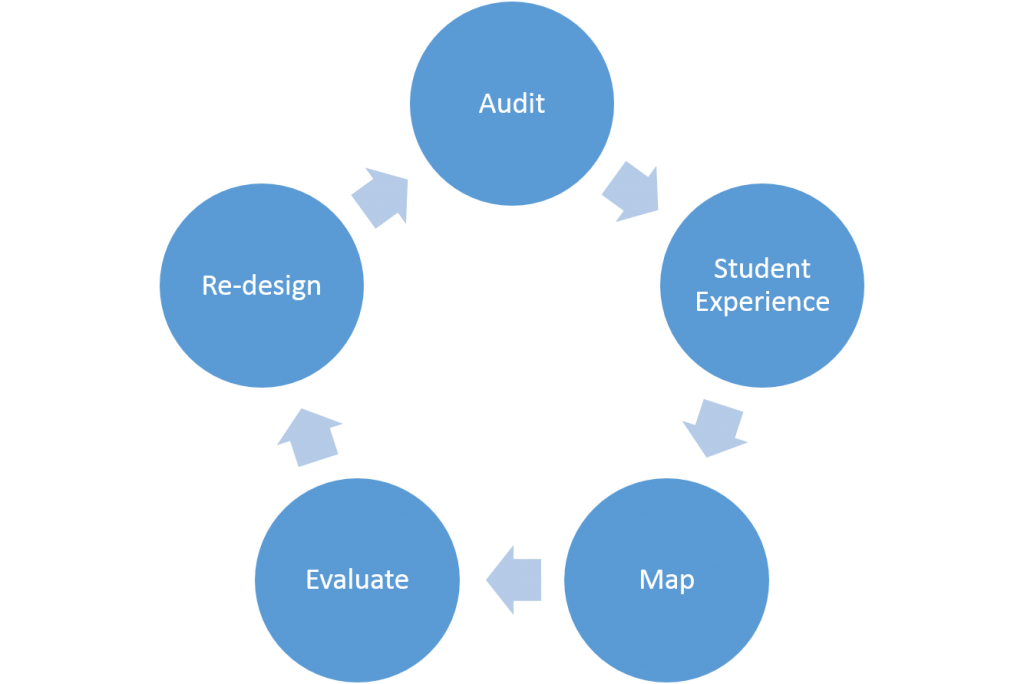resources
UoR, Assessment and Feedback policy and guidance
UoR, How to carry out a curriculum review
Assessment Audit and Review Resources
Higher Education Academy (2012) A Marked Improvement: Transforming assessment in higher education
TESTA (Transforming the Experience of Students through Assessment)
University of Reading Case Studies
Programme level assessment audit and review
The Curriculum Framework highlights the importance of taking a holistic approach to assessment and feedback, where this is planned in view of the programme as a whole. It is suggested that programme level assessment review should follow a five-stage process.
Audit: For each part of the programme, identify every assessment required in the core modules
Student experience: Discover how students view the assessment environment through questionnaires/focus groups
Mapping: Map assessments to programme level learning outcomes to determine alignment, coverage, progression, and gaps
Evaluation: Use the information from the previous steps to evaluate the fitness-for-purpose of the assessment programme
Re-design: Make appropriate changes to assessments at modular level to ensure an effective programme approach to the overall assessment environment

This process is closely aligned to the TESTA (Transforming the Experience of Students through Assessment) methodology.
What can I do?
A programme level review of assessment should take a team approach and involve students. There are a number of ways auditing assessment at a programme level can be undertaken, as it is likely that the optimal outcome will depend on the programme type and size and the experience and teaching style of the programme team.
This page provides information and resources, including in the form of case studies form the University of Reading, on how an assessment audit and review at a programme level might be approached.
If you would like support on conducting a programme level assessment audit and review, please contact Dr Kamilah Jooganah or Mr Rodney Coombridge.
Software Tools
In addition to standard spreadsheet software like Microsoft Excel or OpenOffice, the following tools could be useful in producing and visualising your data:
Online survey tools (Google Forms and Typeform) - useful in this context for easily gathering and processing survey information from module conveners and student representatives.
Open source statistical analysis packages (R, Tableau Public) - for most purposes Microsoft Excel will be suitable for visualising your data but open source statistical packages can be used for more complex visualisation, for example the Assessment Heat Map shown in the case study from Meteorology.
